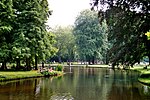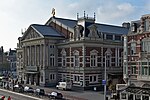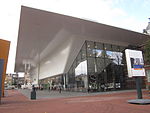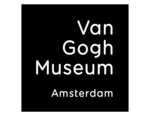Blauwe Theehuis
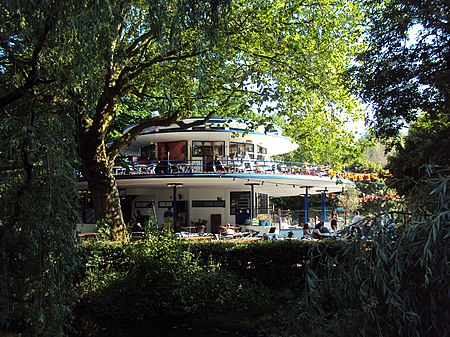
The Blauwe Theehuis ("Blue Tea House") is a 1930s Modernist pavilion in the Vondelpark in Amsterdam, the capital city of the Netherlands. It is a ring-shaped building, somewhat reminiscent of a flying saucer. Originally a tea house, it is in use as a café and restaurant, surrounded by outside seating. The Blauwe Theehuis is also used for theatre performances, festivals, weddings, and other events. The building has rijksmonument (national monument) status. The building was constructed out of concrete, steel and glass. It consists of two circular floors stacked on top of each other, with a circular roof as the third "saucer". The octagonally shaped ground floor is topped by a 12-sided top floor which originally served as residence of the proprietor. A staircase on the outside of the building provides access to the top floor. The roof edges and balustrades and the 12 pillars supporting the top floor are painted blue.
Excerpt from the Wikipedia article Blauwe Theehuis (License: CC BY-SA 3.0, Authors, Images).Blauwe Theehuis
Vondelpark, Amsterdam
Geographical coordinates (GPS) Address External links Nearby Places Show on map
Geographical coordinates (GPS)
| Latitude | Longitude |
|---|---|
| N 52.358819444444 ° | E 4.8725833333333 ° |
Address
Blauwe Theehuis
Vondelpark 5
1071 AA Amsterdam
North Holland, Netherlands
Open on Google Maps

